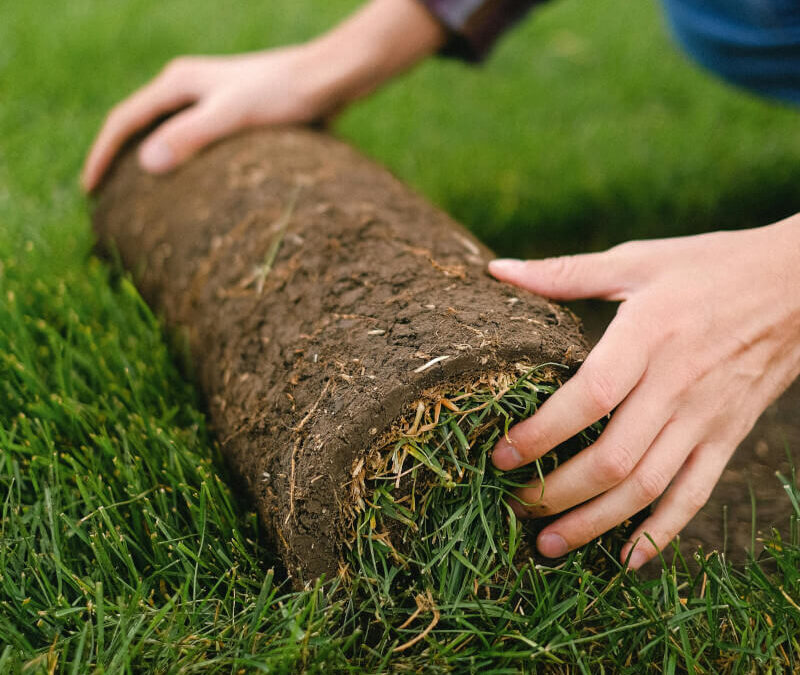Introduction
Sod installation offers homeowners an immediate solution to achieving a lush, green lawn. By transplanting mature grass directly onto prepared soil, sod provides instant aesthetic appeal without the waiting period associated with seeding. However, the success of this method heavily relies on proper preparation and installation techniques.
Understanding the Basics of Sod
Sod comprises mature grass and a thin layer of soil, held together by the root system or biodegradable materials. Grown on specialized farms, sod is harvested in rolls or slabs and transported to the installation site. Once laid, it requires consistent watering and maintenance to establish roots in the new location.
Common Practices in Sod Installation
Standard procedures for sod installation include removing existing vegetation, tilling and leveling the soil, and ensuring adequate drainage. These steps create an optimal environment for the sod to establish a robust root system, leading to a healthy and durable lawn. However, some homeowners may consider shortcuts, such as laying sod over existing grass, which can lead to several complications.
The Problem with Laying Sod Over Existing Grass
Inadequate Root Integration
Laying sod over existing grass impedes the new sod’s ability to establish strong roots. The underlying grass acts as a barrier, preventing direct contact between the sod and the soil. This lack of contact hinders root penetration, resulting in weak turf that is susceptible to lifting and drying out.
Additionally, if the underlying grass is still alive, it can compete with the sod for nutrients and water, making it even harder for the new sod to take root. The insufficient bonding between the sod and soil also increases the likelihood of gaps forming between sod pieces, leading to further instability and an uneven lawn.
Soil Compaction Issues
Existing grass can create an uneven surface, preventing the sod from making consistent contact with the ground. Additionally, layering sod on top of grass contributes to soil compaction, reducing aeration and inhibiting water infiltration. This can lead to drainage problems, making it difficult for the sod to receive essential nutrients and moisture.
Over time, compacted soil can cause water to pool on the surface, leading to waterlogging and root suffocation. Poor drainage can also increase the risk of erosion, washing away vital nutrients and further weakening the sod’s ability to thrive.
Potential for Disease and Pest Infestations
When sod is laid over old grass, decaying organic matter beneath it creates a breeding ground for pests and diseases. Fungal infections, mold, and root rot are common issues that arise due to the trapped moisture and decomposition of the grass underneath. Additionally, insects and lawn pests may thrive in these conditions, further damaging the new sod.
The decomposing grass can attract grubs, mites, and other lawn pests that feed on roots, causing additional stress on the sod. The increased moisture also encourages fungal diseases such as brown patch, pythium blight, and dollar spot, which can quickly spread and destroy large sections of the lawn if not addressed promptly.
Inconsistent Growth and Aesthetics
Sod laid over existing grass often leads to an uneven appearance due to improper rooting and patchy growth. Some areas may establish more effectively than others, resulting in an inconsistent lawn. Furthermore, the decomposing grass underneath can cause the sod to shift and create an uneven surface, diminishing the overall aesthetic appeal.
As the old grass decomposes, it can cause sections of the sod to sink, leading to an irregular lawn with dips and bumps. This not only affects the visual appeal but can also create tripping hazards. Additionally, since the sod does not integrate well with the soil beneath, it may require more frequent watering and fertilization to maintain its appearance, increasing long-term maintenance costs.
Environmental and Long-term Implications
Impact on Soil Health
Healthy soil is the foundation of a thriving lawn. Laying sod over existing grass can degrade soil quality by restricting natural decomposition processes and preventing proper nutrient cycling. Over time, this practice can lead to nutrient deficiencies and unhealthy turf that requires more maintenance and fertilizer applications.
Water Inefficiency and Wastage
Sod that fails to root properly requires excessive watering to stay alive, leading to water waste. Poor root integration means that much of the water runs off instead of being absorbed into the soil. This inefficiency increases water consumption and can contribute to higher utility bills while negatively impacting local water resources.
Why Hiring a Professional Matters
Avoid Additional Costs from Improper Installation
Attempting to install sod without proper knowledge and preparation can lead to costly mistakes. If sod is laid incorrectly, it may not root properly, requiring expensive repairs or even a complete redo of the installation. Hiring a professional ensures the job is done right the first time, preventing unnecessary expenses.
Save Time and Effort
Installing sod is a labor-intensive process that requires precision and expertise. A professional landscaper has the tools and experience to efficiently prepare the soil, lay the sod, and ensure proper watering and maintenance. This saves homeowners significant time and effort while ensuring optimal results.
Ensure Long-lasting Results
A professionally installed sod lawn is more likely to thrive and remain healthy over time. Experts understand soil conditions, grass types, and best practices for sod installation, leading to a beautiful, durable lawn. Proper installation reduces the risk of disease, pest infestations, and uneven growth, maximizing the longevity of the sod investment.
Conclusion
While laying sod over existing grass may seem like a convenient shortcut, it poses significant risks to lawn health, soil integrity, and environmental sustainability. Proper preparation, including the removal of existing grass and thorough soil preparation, is crucial for successful sod installation. By adhering to these best practices, homeowners can ensure the establishment of a lush, resilient lawn that enhances their property’s beauty and value.
For professional sod installation services and expert guidance, trust the team at Henry Landscaping to deliver exceptional results tailored to your outdoor space.
Related Articles
The Pros and Cons of Sod Installation vs. Seeding Your Lawn
Hello! Let’s talk grass. Grass is everywhere.MOST places it’s growing wild. Fields, farms,...
Tips for Sod Installation and Maintenance
Tips for Sod Installation and Maintenance Preparing the Ground for Sod Assess Your Yard Identify...
Factors to Consider When Choosing Sod for Your Area
Factors to Consider When Choosing Sod for Your Area There are many factors that go into...
Choosing the Right Type of Sod for Your Climate
Needing to choose the right kind of sod for your yard may not be something you considered to be a...

